Before traveling abroad with a loaded bike carrier, you need to be aware of the regulations in force in the country(ies) in question, to avoid any penalties. Regulations on bike carriers are not standardized throughout Europe, here's everything you need to know to travel with peace of mind to our neighbors (Belgium, Switzerland, Italy, Spain, Portugal, Netherlands, Germany, United Kingdom, Austria, Sweden).
Bike carrier safety
The installation and use of bike racks are governed by strict safety rules. Here's a reminder of the important points to check and the good habits to adopt, to use your bike rack correctly.
First and foremost, you need to follow the manufacturer's instructions on the assembly and use of their bike racks. It's essential to identify the limits of your bike rack, in particular as regards the maximum authorized speed and maximum load.
The maximum authorized load can easily be found in the technical documentation supplied by the manufacturer. It can also be found on the label affixed to the carrier. The total load capacity of the carrier must be respected, but there is also a weight limit per bike which must not be exceeded. Keep a close eye on this weight limitespecially if you're carrying an electric bike, which is considerably heavier than a conventional bicycle.
In the case of a bike carrier installed on the vehicle's towball, it's essential to check the maximum vertical load allowed by the towbar in question. Similarly, for a roof-mounted bike carrier, you need to check the maximum load specified for the vehicle.
A reminder of good safety practice when using a bike carrier:
- Regularly check and, if necessary, reinforce bike fastening (with straps);
- Remove removable accessories from your bikes (water bottles, panniers, speedometers, lights);
- On an EAB, always remove the battery to reduce the weight carried by the carrier.
Bicycle rack regulations in Europe
In Europe, regulations on bike racks vary from country to country. While there are some common rules, there are also local specificities that should not be ignored. The detailed information below will help you avoid an unfortunate fine in the event of an inspection. So don't risk disrupting your well-deserved vacation!
In France
- Bicycle racks must be approved for use on the road. It must meet the requirements of French standard NFR 18-903-2 or international standard ISO 15263-4.
- Roof-mounted bike racks must be supported by a roof rack or roof bars. Roof-mounted bicycles may not extend beyond the front hood.
- In France, bike racks and bicycles must not exceed a maximum width of 250 cm.
- If your installation exceeds the 40 cm limit on the right and left of the vehicle, you must add white lights visible from the front and red reflectors visible from the rear.
- The vehicle's license plate and signal lights must remain fully visible. If this is not the case, you'll need to install a ramp and a second plate.
In Belgium
- In Belgium, the bike rack must incorporate a reversing light and a rear fog light. To do this, your bike carrier must have a 13-pin connector.
- The license plate and signal lights must be fully visible. If the installation hides them, a signalling ramp for mounting a new plate is essential.
In Switzerland
- Lights and license plate must be fully visible. Swiss regulations require a bicycle rack with a 13-pin connector.connector, to display the reversing light and fog light.
- The rear bike rack may not protrude more than 20 cm on either side of the vehicle. The maximum authorized width is 2 meters.
- If the installation extends the length of the vehicle by more than one meter at the rear, you must add a warning sign.
- Please note that the total loading height of a roof-mounted bicycle rack must not exceed 4 meters.
In the UK
- Please note that in the UK, it is not recommended to drive in the third (or fourth, etc.) lane with a vehicle fitted with a roof rack.
- The license plate and lights must be clearly visible. Opt for a bike rack with an integrated signal ramp, or add a ramp with a second plate.
*Please note that since the Brexit, certain regulations are subject to change.
In the Netherlands
- Your bicycle rack and bicycles may not protrude more than 20 cm on either side of the vehicle.
- If the license plate is obscured, a second white plate must be fitted. Lights must also remain clearly visible; if this is not the case, you'll need to install a warning ramp.
In Germany
- In Germany, the maximum width of your installation (bike rack and bicycles) is 255 cm.
- For roof-mounted bike racks, the total height of the load may not exceed a limit of 4 meters.
- The bike carrier must use a 13-pin connector to integrate a reversing light and a rear fog light.
In Austria
- As in Germany Austrian regulations require the presence of a reversing light and a fog light on a rear bicycle rack. A bike carrier with a 13-pin connector is therefore essential.
- In Austria, you are authorized to use a red license plate, but this type of plate is only valid in this country.
In Italy
- In Italy, it is compulsory to fit your bike carrier with a traffic sign.even if no bike is attached to it. It must be an aluminum sign, 50 x 50 cm in size, with 5 diagonal stripes in red and white.
- Please note that the Italian road sign is different from the one used in Spain, which has 3 diagonal stripes in red and white. Reversible Italian/Spanish signs are available on the market.
- When the bike rack occupies the entire width of the car, a second sign must be added. The 2 signs should be placed at the right and left ends, forming an "inverted V".
- The license plate and rear lights must always be visible. If this is not the case, you'll need to use a ramp.
- If you ride at night, your bike rack must be fitted with red lighting.
- The bike rack's load may extend beyond the rear of the vehicle, but may not exceed 30% of its total length.
In Spain
- As in Italy, it is compulsory in Spain to place a warning sign on the rear of your bike carrier.
- Unlike the Italian sign, the Spanish sign features 3 diagonal stripes in red and white. The sign must be approved, 50 x 50 cm in size and made of aluminum (plastic signs are not permitted).
- If the bike rack occupies the entire width of the car, a second sign must be added. The 2 signs must be placed at the right and left ends, forming an "inverted V".
- The license plate and rear lights must remain perfectly visible. If your bike rack hides them, you'll need to install a signalling ramp with a plate holder.
- Your installation may only overhang at the rear. For a "divisible" load, the authorized overhang is set at 10% of the vehicle's length, and at 15% for an "indivisible" load.
In Portugal
- First of all, please note that Portuguese regulations do not recommend the use of bicycle racks on towballs or tailgates. These have only been authorized on Portuguese roads since 2003.
- We advise you to have the manuals supplied with your bike carrier forwarded to you, to prove that it is fully approved in the event of an inspection.
- The bike carrier and its load must not protrude beyond the width of the vehicle.
- A rear-mounted bike carrier may only extend the length of the vehicle by a maximum of 45 cm. For hitch-mounted models, measure from the hitch ball. For a bike carrier mounted on the tailgate, the measurement is taken directly from the rear of the vehicle.
- The vehicle's license plate and signal lights must be clearly visible. If this is not the case, the addition of a signalling ramp is essential.
- For roof-mounted bike racks, the total height of the installation must not exceed 4 meters.
In Sweden
- In Sweden, it is compulsory to attach an additional white plate to the rear of the bike rack or to the bikes. A sticker indicating the country of the crew is essential, e.g. FR for France.
- The car's number plate and rear lights must be clearly visible. If this is not the case, you'll need to fit a signal rail.
Découvrez tous nos conseils & Tutoriels
ACCESSORIES - Bike Racks
-
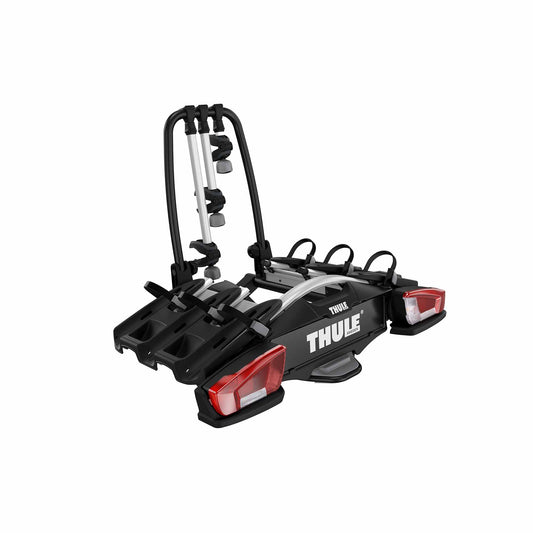
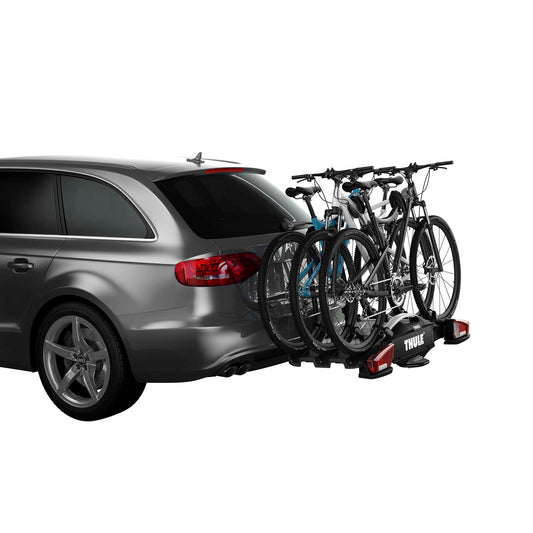
THULE VELOCOMPACT 3 Bike Carrier on Hitch
Regular price 599,90 €Regular priceUnit price per -
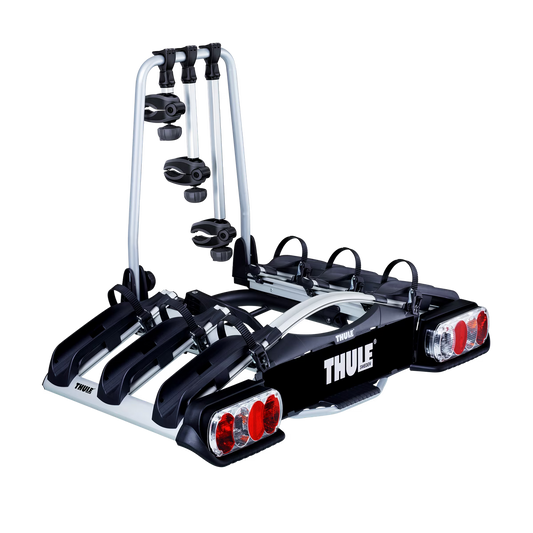
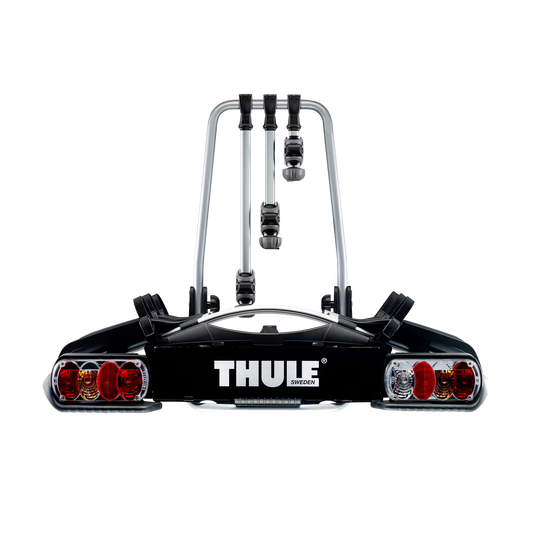
THULE EUROWAY G2 3 Bike Carrier on Hitch
Regular price 489,90 €Regular priceUnit price per -
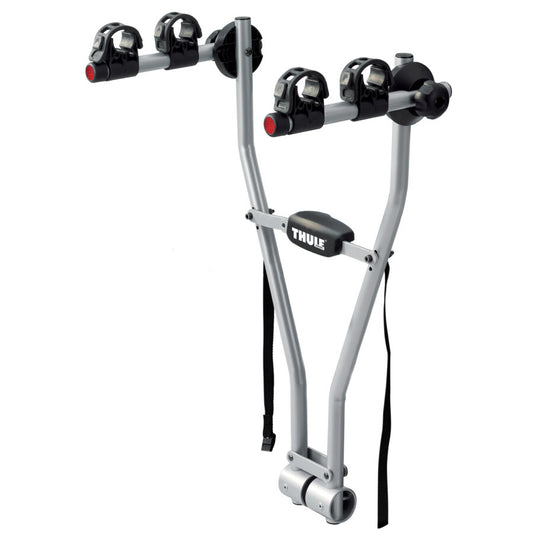
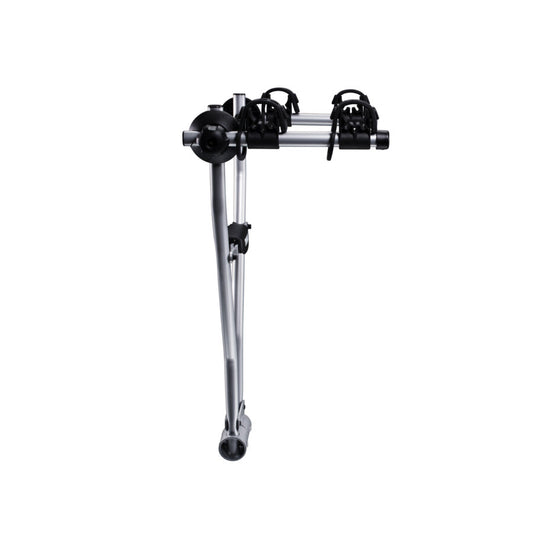
THULE XPRESS 2 Bike Carrier on Hitch
Regular price 85,99 €Regular priceUnit price per -
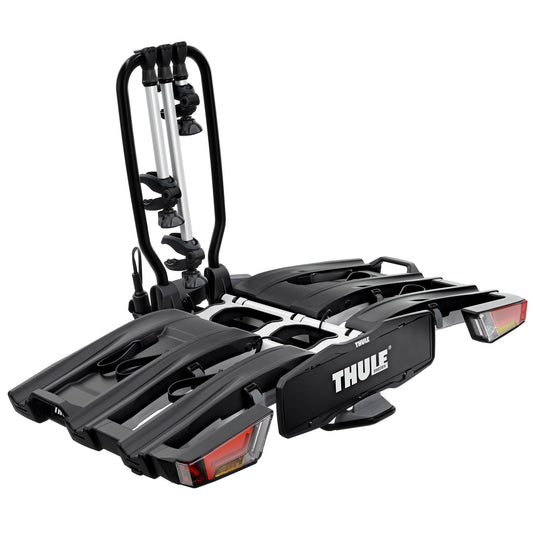
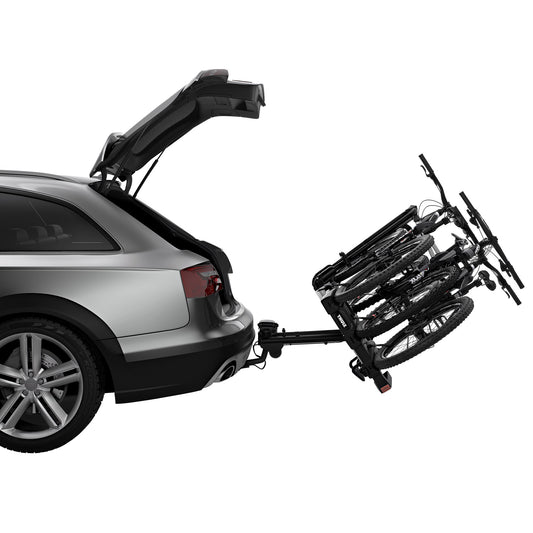
THULE EASYFOLD XT 3 Bike Carrier on Hitch
Regular price 859,90 €Regular priceUnit price per -
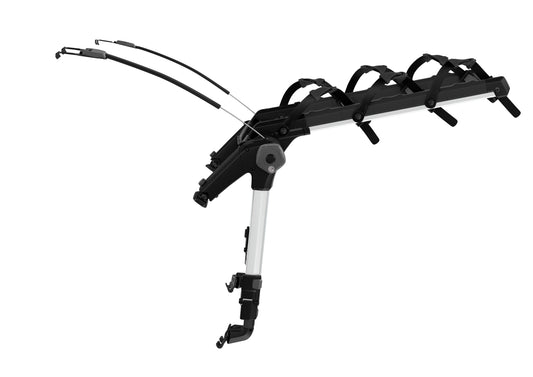
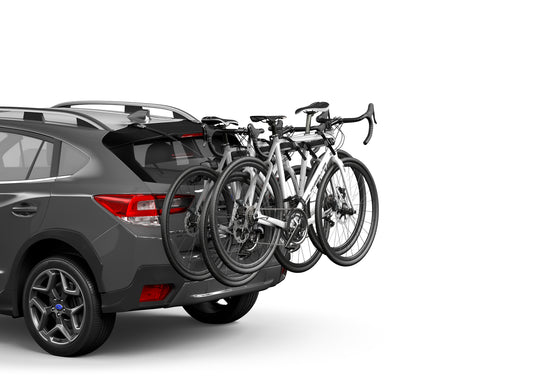
THULE OUTWAY 995 3 Bike carrier on tailgate
Regular price 439,90 €Regular priceUnit price per -
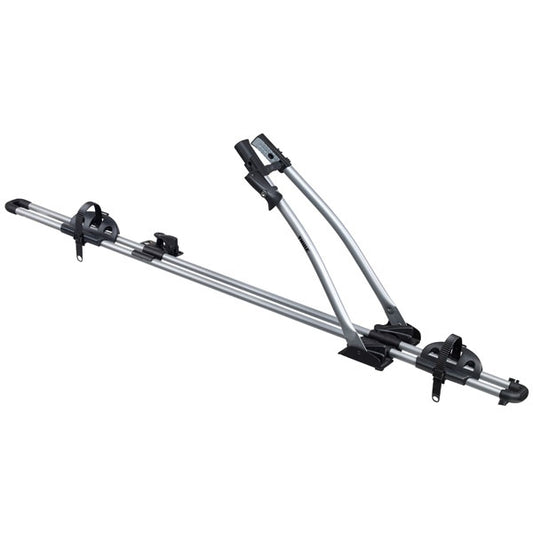
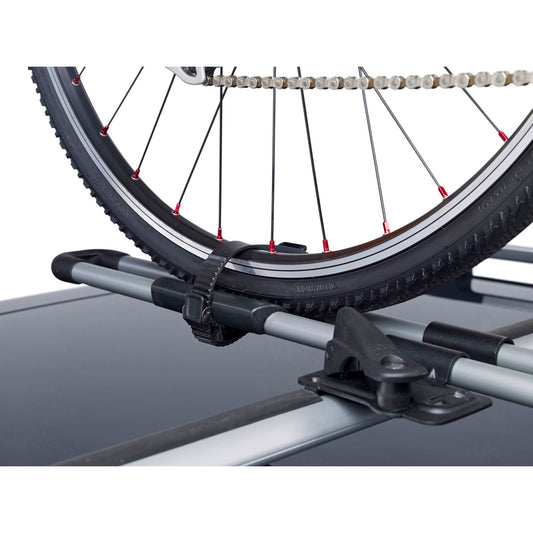
THULE FREERIDE 1 Roof Bike Carrier
Regular price 89,99 €Regular priceUnit price per -
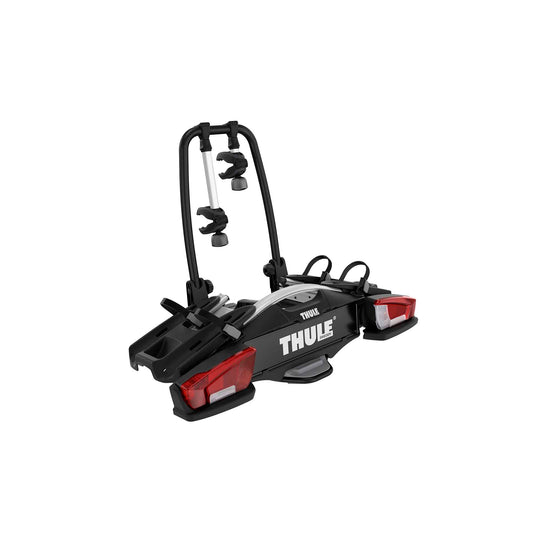

THULE VELOCOMPACT 2 Bike Carrier on Hitch
Regular price 499,90 €Regular priceUnit price per -
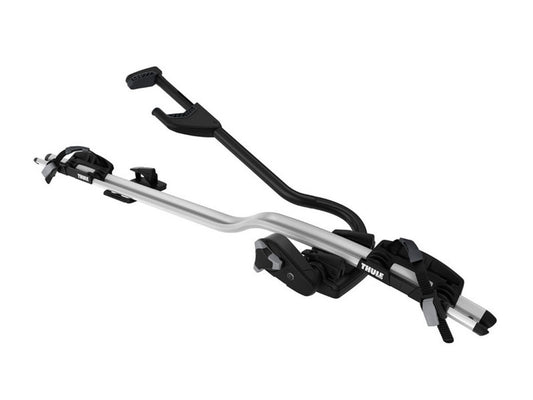
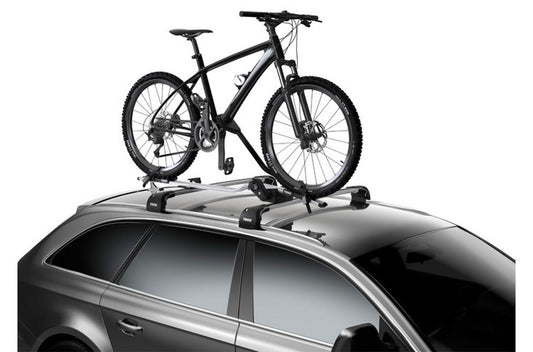
THULE PRORIDE 1 Roof Bike Carrier
Regular price 169,99 €Regular priceUnit price per
















